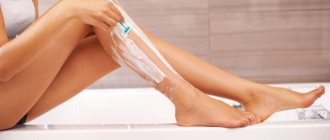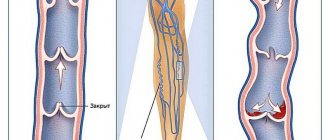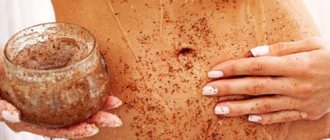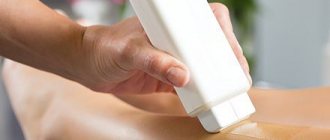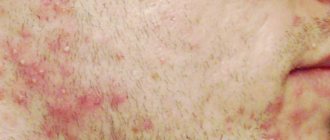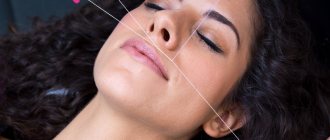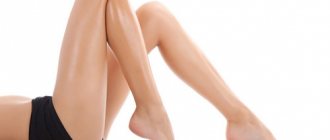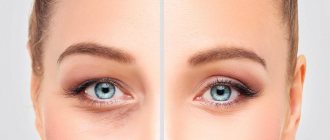Sweet hair removal (sugaring) is one of the more common, affordable and harmless methods of hair removal. Treating the skin in intimate places, armpits, face and other areas with sweet paste does not cause the same damage as shaving, and the results of the procedure last even longer.
The only downside is irritation after sugaring, which is a common side effect and requires proper skin care.
Carrying out the procedure
Sugaring is a special procedure that allows you to painlessly lose hair on the surface of the body. Its difference from other types of depilation is that removal occurs not through the action of a cream or razor, but with the help of sugar paste. This hair treatment is possible on any area of the skin, including intimate places. Sugaring can be done both in a beauty salon and at home. The link lists all types of bikini area depilation.
Preparing sugar paste is not difficult, and it will require little money. All you need is sugar, lemon juice and water. Next, a thick mixture is formed from these components, which is applied to the surface of the skin.
A few seconds are enough for the syrup to harden and “imprint” the hair inside its mass. Then the hardened paste is quietly removed along with the hairs.
For sugaring paste, the proportions of the components and the cooking time on the stove will be critical. If you overcook the paste or add insufficient lemon juice, the procedure may either not take place at all or become very painful. You won’t need much of the sugar depilation paste itself, since the application layer is only 5 mm.
On video how to get rid of irritation in the bikini area after sugaring:
Sometimes anesthesia is administered before the procedure. The link describes in detail how to relieve pain in the bikini area during hair removal.
If we talk about the benefits of sugaring, then first of all it is associated with a long period of smooth skin. In addition, we can add here the absence of any allergic consequences, burns and similar irritations. And if you perform a peeling procedure with sugaring, you can also avoid the appearance of ingrown hairs.
The disadvantages of this method lie in some pain directly during the procedure. Hair removal, especially in intimate areas, armpits and bikini area, can cause varying degrees of pain. In addition, a poor-quality procedure can subsequently cause troubles such as itching, irritation, and the appearance of pimples. It is difficult to deal with this irritation, and therefore it is better to adhere to the most important rules for sugaring. Read in detail how to do depilation in the bikini area at home.
Why does irritation occur after sugaring?
All existing hair removal methods are a stress factor for delicate female skin. Sugaring involves pulling out hair, so after the procedure the skin inevitably turns red. After a few hours, the redness goes away and the skin returns to its normal color.
But sometimes it happens that the redness does not go away, a rash appears, red spots or dots, pustules, wounds, and itchy skin. This is not normal. There are several reasons that cause redness and pimples after sugaring:
- Incorrectly performed procedure. There are certain rules for performing sugaring. You need to apply sugar paste against hair growth, and remove it according to hair growth. You must tear off the sweet mass parallel to the skin; you cannot pull it up or at an angle of 45 degrees. During removal, be sure to stretch the skin on the treated area so that the paste comes off more easily. If you do not follow these rules, you can significantly injure the skin, which will cause severe irritation.
- Multiple processing. It is advisable to treat the same area no more than twice. If you do more, the layer of epidermis will become thinner and irritation will begin. If, after reapplying the paste, some hair still remains, it is better to remove it in another way, for example, with a razor or tweezers. Particular care must be taken when handling sensitive skin in the deep bikini area.
- Poor quality pasta. Ideally, sugaring paste should consist entirely of natural ingredients. The presence of chemical preservatives, fragrances, stabilizers, flavorings can cause allergies and itching. A low quality product can also harm the skin.
- Violation of hygiene rules. Hair removal can only be done on clean, antiseptic-treated skin. Hands and all tools must also be clean. If this rule is not followed, there is a risk of infection that will cause inflammation.
- Individual characteristics of the body. Some people have very sensitive skin that does not tolerate such procedures well. Dry skin always turns red after such exposure. A tendency to allergies is also not uncommon.
- Weakened immunity. If the body's defenses are weakened, then even such a simple procedure as hair removal can cause irritation, inflammation, and the appearance of pustules and ulcers. This is why it is not recommended to do sugaring not only during a severe illness, but even during mild illness.
- Failure to follow the rules of skin care after depilation. After the procedure, you need to follow some recommendations to allow the skin to recover faster.
- The redness may be due to talc causing your allergy.
Irritation and inflammation can appear on any part of the body - on the arms, legs, intimate area, armpits, face. How to deal with them?
A surefire way to avoid irritation
It is important to prepare properly for sugaring:
- cleanse the skin with a scrub a couple of days before the procedure;
Body Scrub - on the day of the procedure, do not use creams and lotions that have a greasy texture;
- on sensitive skin (in the bikini area, etc.), use painkillers (Emla cream is recommended, which has a pain-relieving effect).
Before you start sugaring, you need to treat your skin with a lotion with a degreasing and disinfecting effect. Then sprinkle the skin with talcum powder to remove residual oil and reduce sweating. It is also important to remember how long your hair should be before the sugaring procedure.
Sugar paste must be at a certain temperature. It is best to buy it ready-made, especially when it comes to intimate areas, where any experiments are fraught with increased irritation. For the bikini area, the consistency of the paste should be dense. This is due to the stiffness of the hairs. If you use a paste of inappropriate density, the procedure will have to be repeated several times.
In the photo - sugar paste for sugaring:
Sugar paste for sugaring
Apply the paste in the correct direction, i.e. taking into account hair growth. So that it can be removed after hardening in the direction of growth.
For beginners and those who want to perform sugaring faster, using a bandage is suitable. In this case, a special bandage is applied on top of the paste, which sticks to the paste and helps to simultaneously remove it from the entire area. Read here in detail about what the bandage sugaring technique is.
After the procedure, the skin in the bikini area must be treated. First of all, it is necessary to remove the remaining paste with warm water, rinse them off, and moisturize the surface of the skin with a disinfectant lotion, which will eliminate irritation and reduce hair growth activity.
Also find out what to do if sugaring paste sticks to your hands.
Preventive action
To prevent complications after sugaring, during skin healing you need to follow the following rules:
- do not visit swimming pools, baths and saunas, public showers, do not swim in water bodies;
- You can’t do body wraps or take a hot bath;
- do not play sports, avoid active physical overload and long walks in hot weather;
- It is forbidden to wear tight underwear and clothes, especially those made of synthetic materials;
- do not apply alcohol-containing tonics, decorative cosmetics, fatty creams, deodorants and antiperspirants;
- protect the skin from the direct action of UV rays, temporarily avoid going to the solarium;
- often take a cold or warm shower to prevent irritation from sweat (you can wet your skin no earlier than 2-3 hours after sugaring);
- treat injured skin with disinfectant and soothing mixtures, light creams and creams;
- from 2-3 days, start lubricating the epilated area with hair growth blockers in the form of lotion;
- exfoliate the epilation area frequently (only after complete healing).
After the procedure
If all the above rules are strictly followed, then no irritation should occur in intimate places. For complete peace of mind, try to avoid water procedures in the bikini area in the first 6 hours and in the first two days do not take a hot bath, but opt for a shower. Hot water most contributes to the growth of inflammation and can inadvertently provoke the appearance of red dots in the bikini area. In addition, it is worth giving up the sauna and swimming pool for a while.
It is advisable to peel the treated intimate skin on the fifth day after the procedure. It is best to do it with a soft scrub. Peeling allows you to eliminate the appearance of ingrown hairs, which are often perceived as a banal irritation. In fact, ingrown hair, especially in intimate areas, is a serious problem. It is better to scrub delicate skin regularly - once every 4 days is enough. After completing scrubbing, do not forget to treat your skin with moisturizer.
What should the skin look like after the procedure?
During hair removal, the skin is injured because hair follicles are removed. Small red dots remain on it, visible to the naked eye. In some cases, “goose bumps” appear on the area treated with paste, which is caused by an inflammatory reaction.
Normally, redness and the appearance of pores are not accompanied by pain or burning. Irritation lasts for 2-4 hours after the procedure, for sensitive skin – up to a day. If redness persists for more than 24 hours, is accompanied by severe burning or the appearance of pimples and ulcers, it is necessary to take measures to treat the skin.
As hair grows, pimples and bumps may appear due to ingrown hairs. Scrubbing and periodically steaming the skin significantly reduces the likelihood of this complication.
Antiseptic
For those who have the most delicate skin surface in the bikini area, it is necessary to additionally soften its surface before the procedure.
To do this, it would be best to take a bath. Hot water will allow the pores to open better, which will subsequently make it easier to remove hair from the follicles. Before the procedure itself, you can also treat the bikini area with an antiseptic. It will prevent even the slightest chance of infection. Increased sweating can also be a big problem. In this case, you should not skimp on talc, which will absorb sweat.
Hands
Hand sugaring is done if the hairline is very thick. It should be borne in mind that the presence of dense hair may indicate the presence of hormonal disorders. It is advisable to undergo an examination.
The skin of the hands is less sensitive to pain, so the hair removal procedure is not as painful. This is done as follows:
- before starting, you need to warm up your hands so that the pores open;
- dry with talcum powder;
- apply sugar caramel in the direction against hair growth;
- With a sharp movement, remove the strip of caramel along with a number of hairs.
For several days after the procedure, your hands need special care.
Attention! During this period, try not to warm your hands, treat them with antibacterial agents or anti-inflammatory herbal infusions.
How to get rid of goose bumps
Red dots covering the legs and skin in the intimate area after depilation are not the only manifestation of irritation. Another trouble is goose bumps. However, this problem is not insoluble:
- “Goose bumps” can be caused by depilation due to a lack of vitamin D in the body, and in this case, a solarium or sunbathing in the hot season will help get rid of it;
- A visit to a bathhouse or sauna also has a beneficial effect, since goose bumps are smoothed out under the influence of steam and as a result of increased blood circulation;
- At home, a hot bath with pine extract will help, after which you must apply a nourishing cream;
- Body cream after depilation must be selected based on its composition, which must contain vitamins and antiseptic extracts.
A hot bath with pine extract will help get rid of goose bumps after depilation.
